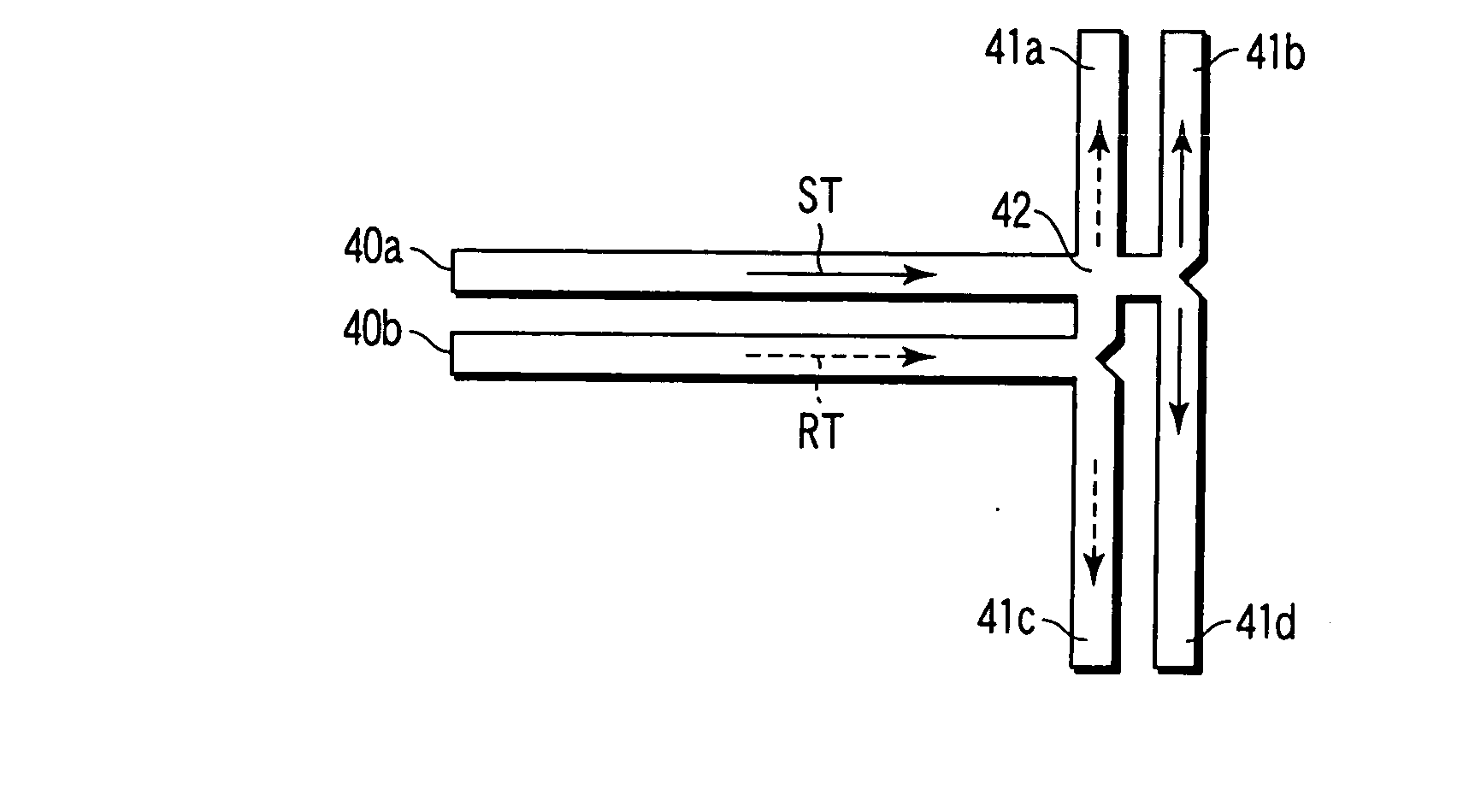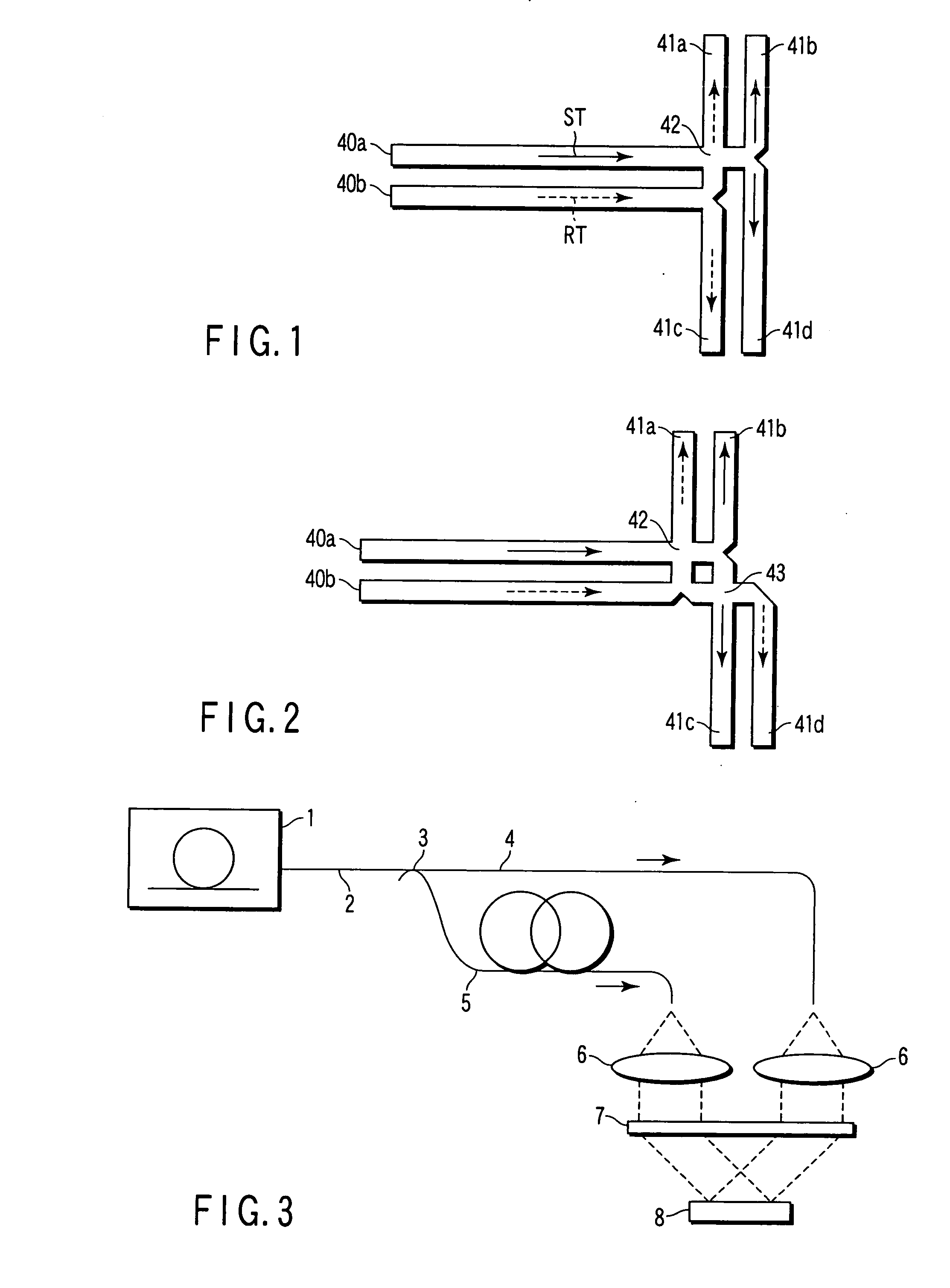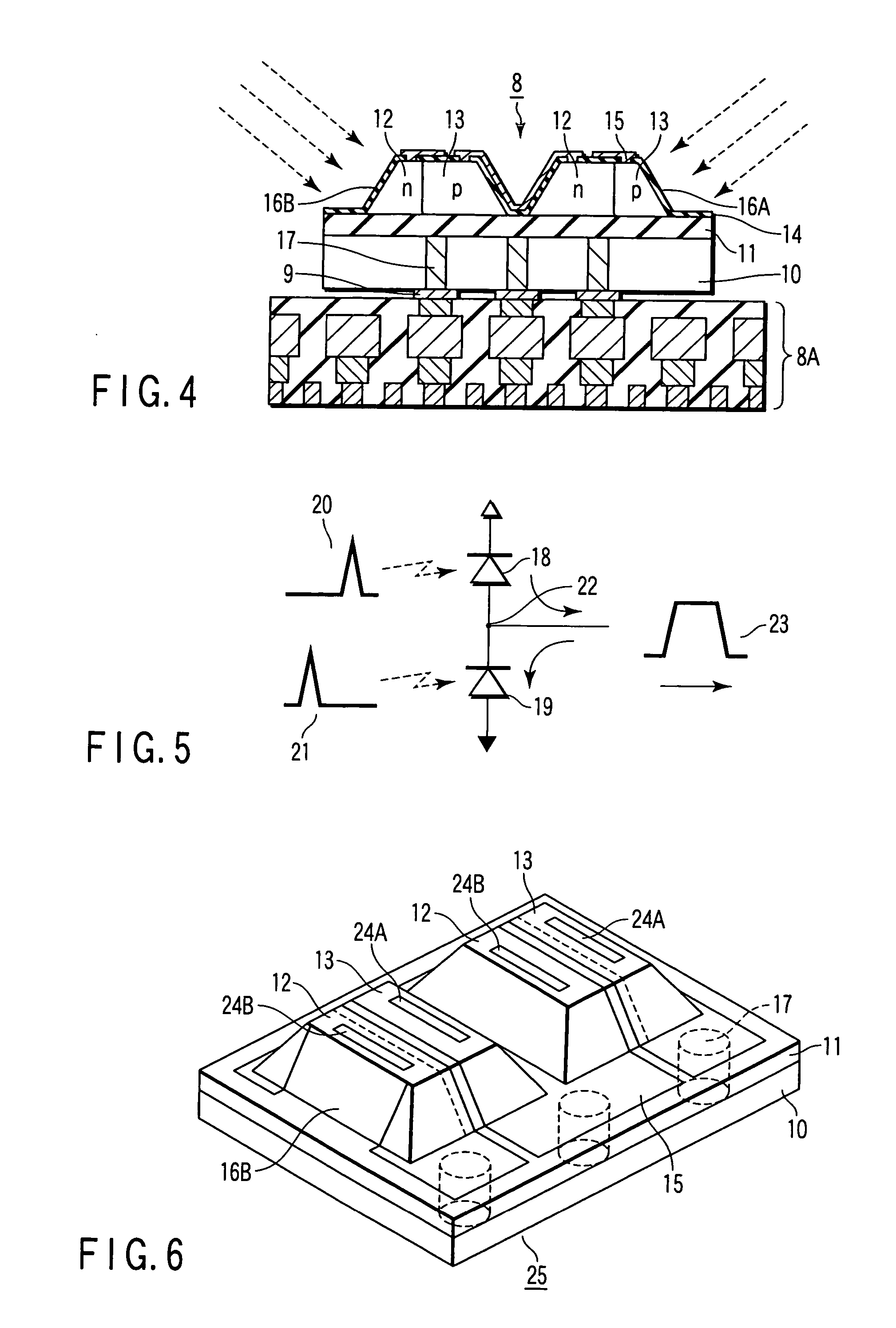LSI apparatus operated by optical clock
a technology of optical clock and optical clock, which is applied in the direction of optical elements, instruments, generating/distributing signals, etc., can solve the problems of difficult to achieve the operation in synchronism with the logic circuit, the clocks are distributed to the internal circuit parts of the lsi, and the clock distribution is difficult to achieve. the effect of reducing the jitter of the clock distribution
- Summary
- Abstract
- Description
- Claims
- Application Information
AI Technical Summary
Benefits of technology
Problems solved by technology
Method used
Image
Examples
first embodiment
[0058]FIG. 3 schematically shows an optical waveguide arrangement of the LSI system operated by the optical clock according to a first embodiment of the present invention.
[0059] Reference numeral 1 shown in FIG. 3 denotes a short optical pulse source for generating a short optical pulse. The short optical pulse generated from the pulse source 1 is guided by an optical fiber 2, and the guided short optical pulse is divided into two components by an optical divider 3, i.e., a two-branching optical fiber coupler. The two branched components of the short optical pulse are guided by optical fibers 4 and 5, respectively, and collimated by collimate lenses 6. Then, the collimated optical pulse components are incident on a diffraction grating 7. The diffraction grating 7 permits the short optical pulse to be incident on an LSI apparatus, i.e., an LSI chip 8 at a prescribed incident angle. In the system shown in FIG. 3, the optical fiber 5 is set longer than the optical fiber 4 by an amount...
second embodiment
[0080]FIG. 9 schematically shows the construction of an optical clock LSI system according to a second embodiment of the present invention.
[0081] A reference numeral 1 shown in FIG. 9 denotes a short optical pulse source for generating a short optical pulse. In the system shown in FIG. 9, the short optical pulse is guided by an optical fiber 2A while preserving the polarized plane of the short optical pulse that is linearly polarized so as to be incident on a wave plate 29. In the wave plate 29, the linearly polarized light beam is converted into a circularly polarized light beam, and the circularly polarized light beam is separated by a polarized beam splitter 30 acting as a de-multiplexing element into light beam components having polarized planes perpendicular to each other. The light beam component having one of the polarized planes perpendicular to each other is guided by a fiber 4A into a multiplexing element 31 while retaining the polarized plane. Also, the light beam having...
third embodiment
[0091]FIG. 10 schematically shows the configuration of an optical clock LSI system according to a third embodiment of the present invention.
[0092] A reference numeral 1 shown in FIG. 9 denotes a short optical pulse source. Each of reference numerals 2A, 4A and 5A denotes a polarized beam-preserving optical fiber for preserving the polarizing plane of the optical beam generated from the short pulse optical pulse source 1. A reference numeral 8 denotes an LSI chip, a reference numeral 29 denotes a wave plate, a reference numeral 30 denotes a polarized beam splitter, a reference numeral 31 denotes a multiplexing unit, a reference numeral 32 denotes an optical fiber, and a reference numeral 35 denotes a collimate lens.
[0093] The optical system between the short optical pulse source 1 and the optical fiber 32 is equal in construction and function to the second embodiment described above and, thus, the detailed description thereof is omitted. In the optical clock LSI shown in FIG. 10, a...
PUM
 Login to View More
Login to View More Abstract
Description
Claims
Application Information
 Login to View More
Login to View More - R&D
- Intellectual Property
- Life Sciences
- Materials
- Tech Scout
- Unparalleled Data Quality
- Higher Quality Content
- 60% Fewer Hallucinations
Browse by: Latest US Patents, China's latest patents, Technical Efficacy Thesaurus, Application Domain, Technology Topic, Popular Technical Reports.
© 2025 PatSnap. All rights reserved.Legal|Privacy policy|Modern Slavery Act Transparency Statement|Sitemap|About US| Contact US: help@patsnap.com



